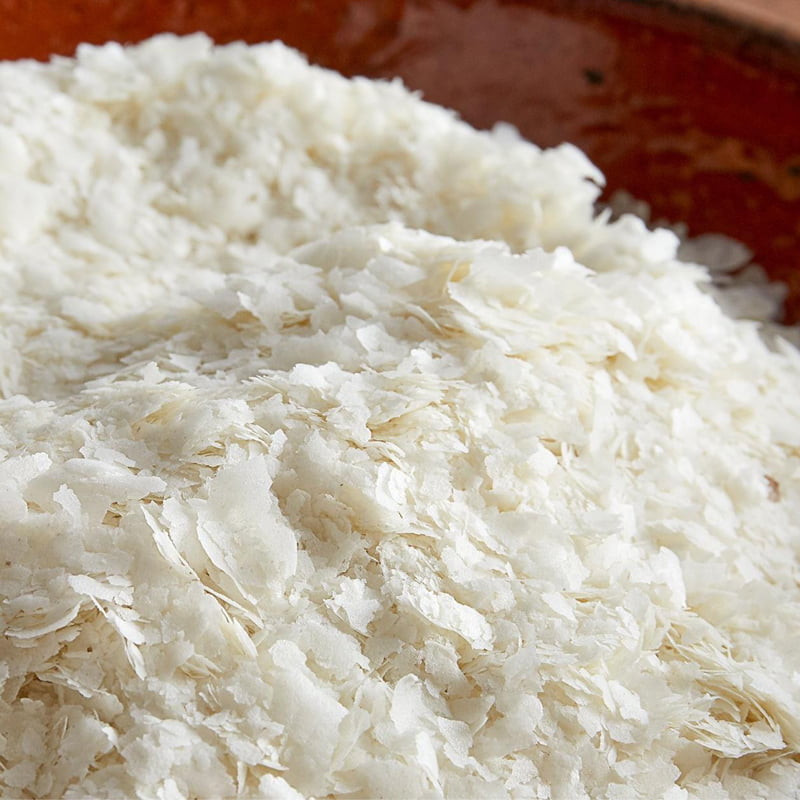Flocos de batata e fécula de batata são aditivos alimentares importantes e ingredientes de salgadinhos. No entanto, muitas pessoas ficam confusas sobre a diferença entre os dois. Como uma empresa profissional de processamento de batata na China, Vou explicar as principais diferenças entre os dois em detalhes.
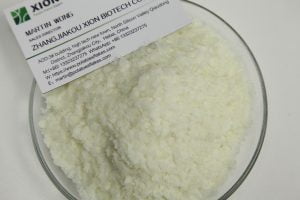
1. Diferença nas propriedades
flocos de batata são feitos de batatas inteiras, incluindo a pele, carne, e fibra. É um pó bege ou marrom claro com um sabor levemente semelhante ao de batata. Amido de batata, por outro lado, é feito a partir do amido extraído da batata. É um pó branco sem sabor ou aroma.
2. Diferença na tecnologia de processamento
O processamento de flocos de batata requer tecnologia mais sofisticada. Batatas frescas são descascadas, fatiado, pré-cozido, resfriado, e depois secou usando um secador de tambor.
Aqui está o processo de produção:
- Seleção de matéria-prima: A seleção das matérias-primas é muito importante e tem impacto direto na qualidade dos flocos de batata. Diferentes variedades de batatas têm diferentes teores de matéria seca, cor, profundidade, reduzindo o teor de açúcar, conteúdo de solanina, e conteúdo de polifenol oxidase.
- Lavar e descascar: As matérias-primas selecionadas serão enviadas para a moega e pesadas em esteira transportadora. Ao mesmo tempo, eles são classificados para remover blocos de batata com manchas de mofo e blocos podres.
- Fatiar: As batatas lavadas e descascadas serão cortadas em rodelas finas aqui.
- Pré-cozimento: As batatas fatiadas serão pré-cozidas em panela a vapor para inativar enzimas e melhorar o sabor e a cor do produto acabado..
- Resfriamento: As batatas pré-cozidas serão resfriadas à temperatura ambiente aqui.
- Secagem: As batatas resfriadas serão secas em um secador de tambor até um teor de umidade de cerca de 8%.
- Moagem: As batatas fritas secas serão moídas até formar um pó fino aqui.
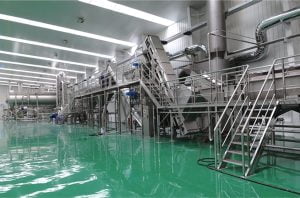
O processamento da fécula de batata é relativamente simples. As principais etapas são as seguintes:
- Lavando: As batatas serão lavadas na máquina de lavar para retirar a sujeira, pedras, caules, e areia.
- Moagem: As batatas lavadas serão moídas até formar uma pasta.
- Peneirar: A pasta de batata será peneirada para separar o leite de amido da parte residual. A parte residual é ainda peneirada para recuperar parte do amido. Os resíduos lavados podem ser usados como ração.
- Desidratação: O leite com amido será desidratado em centrífuga para obtenção de fécula de batata.
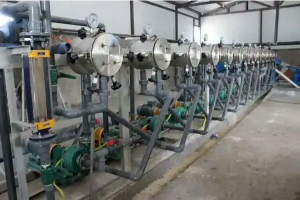
Como você pode ver, a linha de processamento de flocos de batata é relativamente longa e complexa, é por isso que as fábricas de produção de flocos de batata são geralmente maiores. O principal consumo de energia no processo de produção é o vapor de alta temperatura e alta pressão.
Em comparação, o processamento da fécula de batata é muito mais simples.
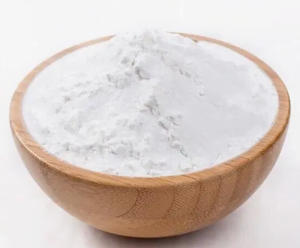
3. Diferenças nos requisitos de matéria-prima
A diferença mais fundamental entre a produção de flocos de batata e fécula de batata é a necessidade de matérias-primas. flocos de batata têm altos requisitos para matérias-primas de batata, enquanto a produção de amido não exige grandes exigências de matérias-primas de batata.
Diferentes requisitos de variedade
As matérias-primas para os flocos de batata são o processamento de variedades de batata, incluindo principalmente Shapoty, atlântico, e Burbank. Estas variedades de batata apresentam elevado teor de matéria seca após a maturidade, grande volume individual, e formato redondo. A produção de fécula de batata não possui grandes exigências de matéria-prima, e não há requisitos especiais para variedades de batata.
Diferentes requisitos para o tamanho de batatas individuais
A produção de flocos de batata requer a utilização de grandes, batatas inteiras, especialmente aqueles que pesam entre 150 e 300 gramas. A produção de fécula de batata não exige quaisquer requisitos quanto ao tamanho e peso das batatas, e todas as batatas podem ser usadas.
4. Diferentes aplicações de flocos de batata e fécula de batata
De um modo geral, flocos de batata são usados principalmente na produção e processamento de salgadinhos. É a principal matéria-prima para muitos salgadinhos, como batatas fritas compostas. Além disso, flocos de batata também são usados nas indústrias de catering e panificação. Além disso, muitos populares purê de batata aromatizado os produtos podem ser feitos rapidamente com flocos de batata.
A aplicação de fécula de batata é mais extensa do que flocos de batata, mas é muito diferente do campo de aplicação dos flocos de batata. O cenário de uso mais comum da fécula de batata é como aditivo alimentar e condimento. É usado principalmente como material auxiliar na área de processamento de alimentos, como processamento de carne, processamento de doces, processamento de macarrão, e processamento de produtos lácteos, e alguns amidos modificados são utilizados na área industrial.
5. Coisas que você talvez não saiba sobre flocos de batata
Em nossa vida diária, temos mais contato com a fécula de batata e temos um certo entendimento de suas características. No entanto, para flocos de batata, existem algumas características que você talvez não conheça.
- Flocos de batata parecem pedaços de neve, então também é chamada de farinha de floco de neve de batata. Normalmente, os flocos de batata originais são cerca de 20 malha, e os fabricantes de flocos de batata também os esmagam 80 malha para diferentes usos.
- Os flocos de batata são cozidos e podem ser consumidos diretamente. O processo de produção dos flocos de batata envolve o cozimento para que possam ser colocados na boca e consumidos diretamente. Tem um forte sabor de batata.
- Os flocos de batata têm excelentes propriedades de reidratação. Assim que os flocos de batata entrarem em contato com a água, eles absorverão água rapidamente e se transformarão em purê de batata. Se você quiser fazer purê de batata em casa, você pode usar 5 vezes o peso da água quente para despejar 1 vezes o peso dos flocos de batata. Depois de cerca de um minuto, você receberá uma porção de purê de batata. Adicione seus temperos favoritos e você pode comê-los diretamente. Aqui está um segredo: usar leite quente para ajustar o sabor vai ficar muito bom.
- Os flocos de batata têm uma vida útil muito longa. Porque o teor de umidade dos flocos de batata é muito baixo, pode-se garantir que não se deteriorará por muitos anos após ser selado e armazenado. Apesar disso, Ainda recomendo que todos comam produtos produzidos na hora.
Outras coisas sobre flocos de batata e fécula de batata
Na produção de flocos de batata e amido, por causa dos diferentes requisitos para matérias-primas, batatas melhores são frequentemente usadas para produzir flocos de batata, enquanto as batatas peneiradas são usadas para produzir amido.
Também com base nos diferentes requisitos de matérias-primas, o preço dos flocos de batata irá flutuar mais do que o da fécula de batata. Na produção de alimentos, quando o custo de produção da fécula de batata é muito alto, haverá outros tipos de amido para substituir o amido de batata, enquanto os flocos de batata quase não têm produtos alternativos.
Quando você come diretamente purê de batata feito de flocos de batata, você pode sentir um pouco de gosto cru. Isto porque embora os flocos de batata sejam um produto cozinhado, o grau de cozimento não atingiu 100%. De um modo geral, o grau de cozimento é 80%, mas não tem efeito.
Sobre o autor
Martin Wong
Martin Wong é o Diretor de Vendas da Xion Biological. Ele trabalha na indústria de processamento profundo de batata há mais de dez anos e tem um profundo conhecimento do processamento e dos produtos de batata.. Ele espera comunicar e discutir todas as questões relacionadas à batata com os leitores.
